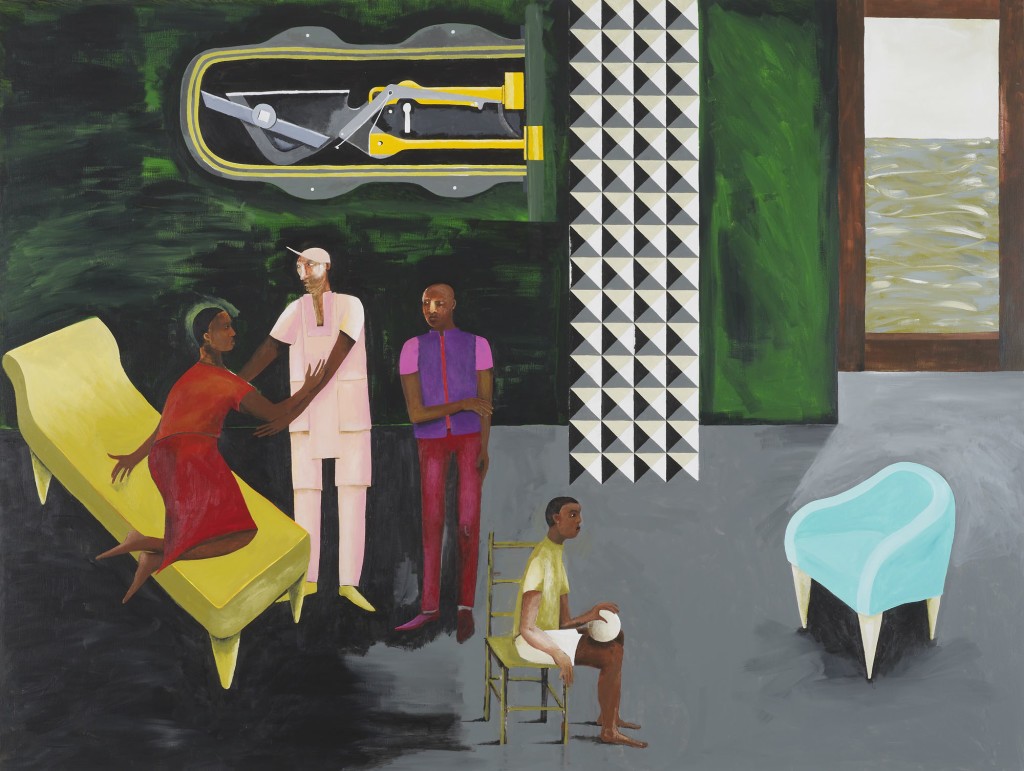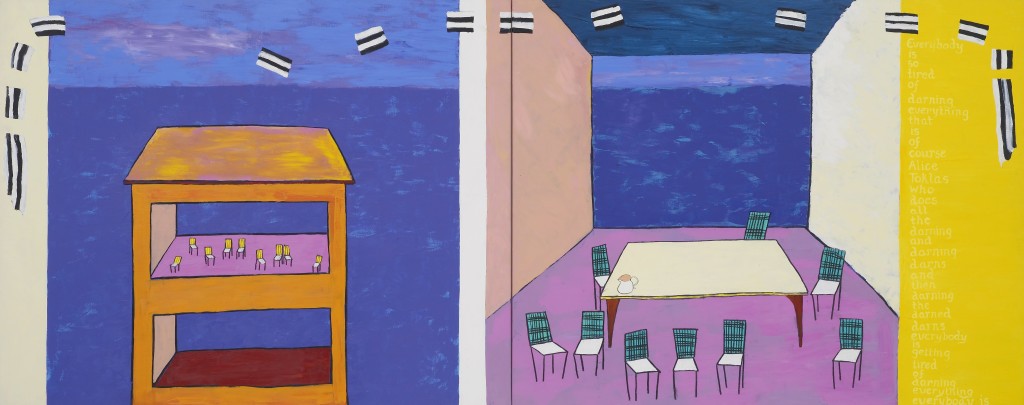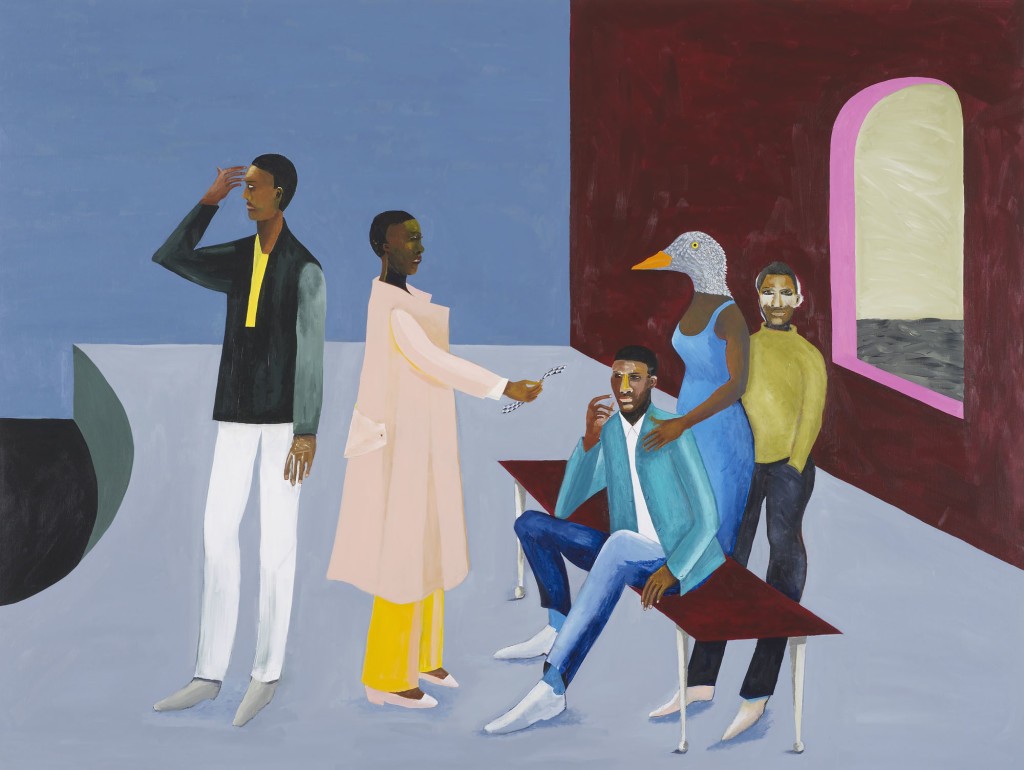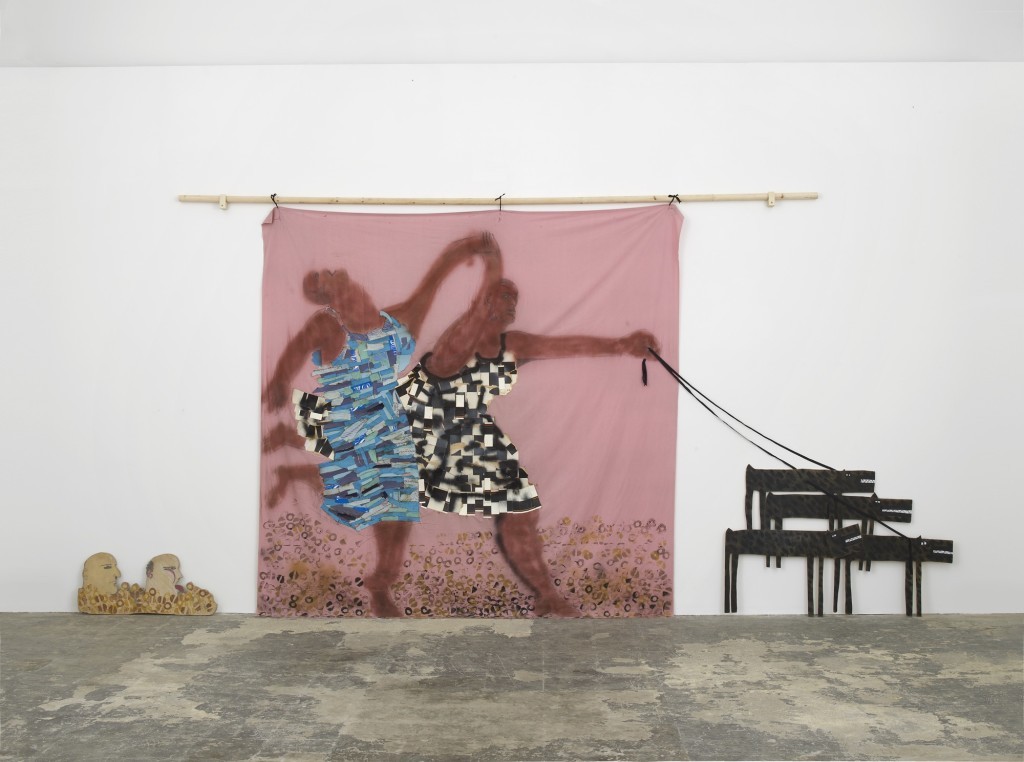Lubaina Himid
Invisible Strategies
21 Jan - 30 Apr 2017
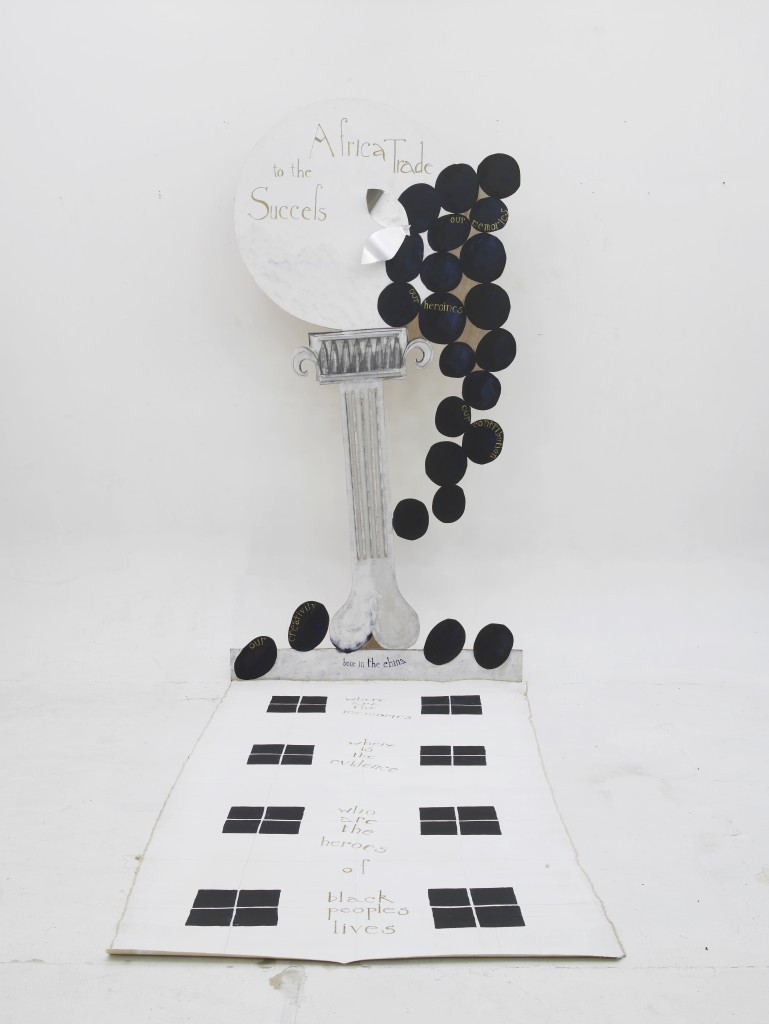
Lubaina Himid
Bone in the China: Success to the Africa Trade, c.1985
Courtesy the artist & Hollybush Gardens
Bone in the China: Success to the Africa Trade, c.1985
Courtesy the artist & Hollybush Gardens
LUBAINA HIMID
Invisible Strategies
21 January — 30 April 2017
Modern Art Oxford presents the first major survey exhibition by British artist Lubaina Himid. One of the pioneers of the British Black Arts Movement, Himid first came to prominence in the 1980s when she began organising exhibitions of work by her peers, whom she felt were under-represented in the contemporary art scene. Himid’s work challenges the stereotypical depictions of black figures in art history, foregrounding the contribution of the African diaspora to Western culture.
Invisible Strategies brings together a wide range of Himid’s paintings from the 1980s to the present day, as well as sculptures, ceramics and works on paper. The exhibition opens with Himid’s monumental Freedom and Change, 1984, which appropriates and transforms the female figures from Picasso’s Two Women Running on the Beach (The Race), 1922, into black women, powerfully and humorously subverting one of the most canonical paintings in Western art history. Containing many works shown for the first time in decades alongside pieces never-before seen in a public gallery, this exhibition highlights Himid’s consistently thought-provoking and distinctive visual style.
Lubaina Himid
Lubaina Himid’s career as an artist, curator and scholar has been central to rethinking the Western canon of art history and museological practices over the past 30 years. Born in Zanzibar in 1954, and moving to England shortly afterwards, her education includes a Masters in Cultural History at the Royal College of Art in London with a graduating thesis titled Young Black Artists in Britain Today, anticipating her involvement in the Black Arts Movement of the 1980s and 90s. Himid went on to organise a number of group exhibitions throughout the 1980s, including Five Black Women at the Africa Centre, London (1983), The Thin Black Line at ICA, London (1985), and Unrecorded Truths at the Elbow Room (1986), which brought to public attention her own generation of black female artists, questioning the limits of their creative visibility in the process. Her own work challenges these boundaries, as seen in her solo show Revenge, featuring consecutive paintings of black women protagonists and memorials to the horrors of the transatlantic slave trade, at Rochdale Art Gallery and the South Bank Centre, London, in 1992, which contested the pictorial narratives so frequently repeated in art history. She completed a residency at Tate St Ives between 1998 and 2000, and has participated in a number of group exhibitions including Uncomfortable Truths: The Shadow of Slave Trading on Contemporary Art at the V&A, London, in 2007, and more recently, Migrations at Tate Britain, Keywords at the International Institute of Visual Arts and Tate Liverpool (2013/14) and Burning Down the House at the Gwangju Biennale, South Korea (2014). In addition to her prolific artistic practice, she holds the position of Professor of Contemporary Art at the University of Central Lancashire, where she leads the interdisciplinary visual art research project Making Histories Visible, reflecting critically on the success and failures of the Black Arts Movement and participating in numerous conferences on art of the diasporas. Revisiting her earlier work, she staged Thin Black Lines in 2011 at Tate Britain with curator Paul Goodwin, and has produced a series of research documentaries including Open Sesame (2005) and The Point of Collection (2007), in collaboration with Tate Liverpool.
Invisible Strategies
21 January — 30 April 2017
Modern Art Oxford presents the first major survey exhibition by British artist Lubaina Himid. One of the pioneers of the British Black Arts Movement, Himid first came to prominence in the 1980s when she began organising exhibitions of work by her peers, whom she felt were under-represented in the contemporary art scene. Himid’s work challenges the stereotypical depictions of black figures in art history, foregrounding the contribution of the African diaspora to Western culture.
Invisible Strategies brings together a wide range of Himid’s paintings from the 1980s to the present day, as well as sculptures, ceramics and works on paper. The exhibition opens with Himid’s monumental Freedom and Change, 1984, which appropriates and transforms the female figures from Picasso’s Two Women Running on the Beach (The Race), 1922, into black women, powerfully and humorously subverting one of the most canonical paintings in Western art history. Containing many works shown for the first time in decades alongside pieces never-before seen in a public gallery, this exhibition highlights Himid’s consistently thought-provoking and distinctive visual style.
Lubaina Himid
Lubaina Himid’s career as an artist, curator and scholar has been central to rethinking the Western canon of art history and museological practices over the past 30 years. Born in Zanzibar in 1954, and moving to England shortly afterwards, her education includes a Masters in Cultural History at the Royal College of Art in London with a graduating thesis titled Young Black Artists in Britain Today, anticipating her involvement in the Black Arts Movement of the 1980s and 90s. Himid went on to organise a number of group exhibitions throughout the 1980s, including Five Black Women at the Africa Centre, London (1983), The Thin Black Line at ICA, London (1985), and Unrecorded Truths at the Elbow Room (1986), which brought to public attention her own generation of black female artists, questioning the limits of their creative visibility in the process. Her own work challenges these boundaries, as seen in her solo show Revenge, featuring consecutive paintings of black women protagonists and memorials to the horrors of the transatlantic slave trade, at Rochdale Art Gallery and the South Bank Centre, London, in 1992, which contested the pictorial narratives so frequently repeated in art history. She completed a residency at Tate St Ives between 1998 and 2000, and has participated in a number of group exhibitions including Uncomfortable Truths: The Shadow of Slave Trading on Contemporary Art at the V&A, London, in 2007, and more recently, Migrations at Tate Britain, Keywords at the International Institute of Visual Arts and Tate Liverpool (2013/14) and Burning Down the House at the Gwangju Biennale, South Korea (2014). In addition to her prolific artistic practice, she holds the position of Professor of Contemporary Art at the University of Central Lancashire, where she leads the interdisciplinary visual art research project Making Histories Visible, reflecting critically on the success and failures of the Black Arts Movement and participating in numerous conferences on art of the diasporas. Revisiting her earlier work, she staged Thin Black Lines in 2011 at Tate Britain with curator Paul Goodwin, and has produced a series of research documentaries including Open Sesame (2005) and The Point of Collection (2007), in collaboration with Tate Liverpool.

